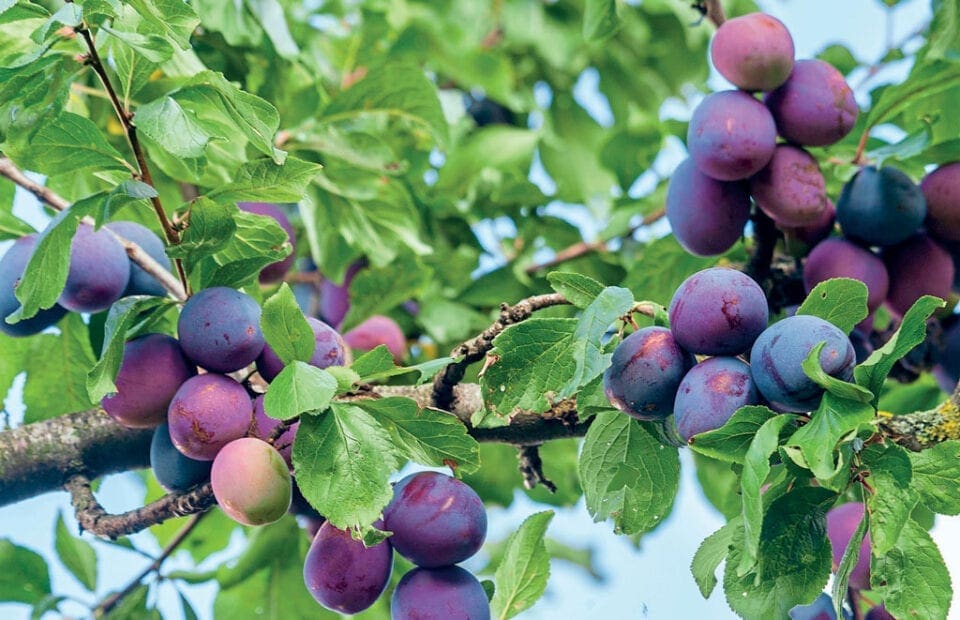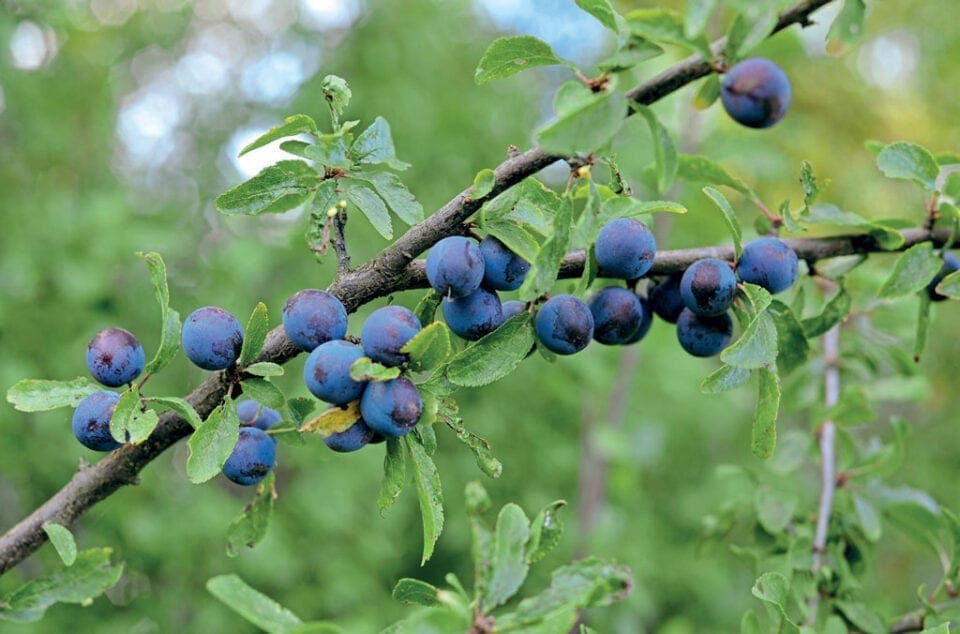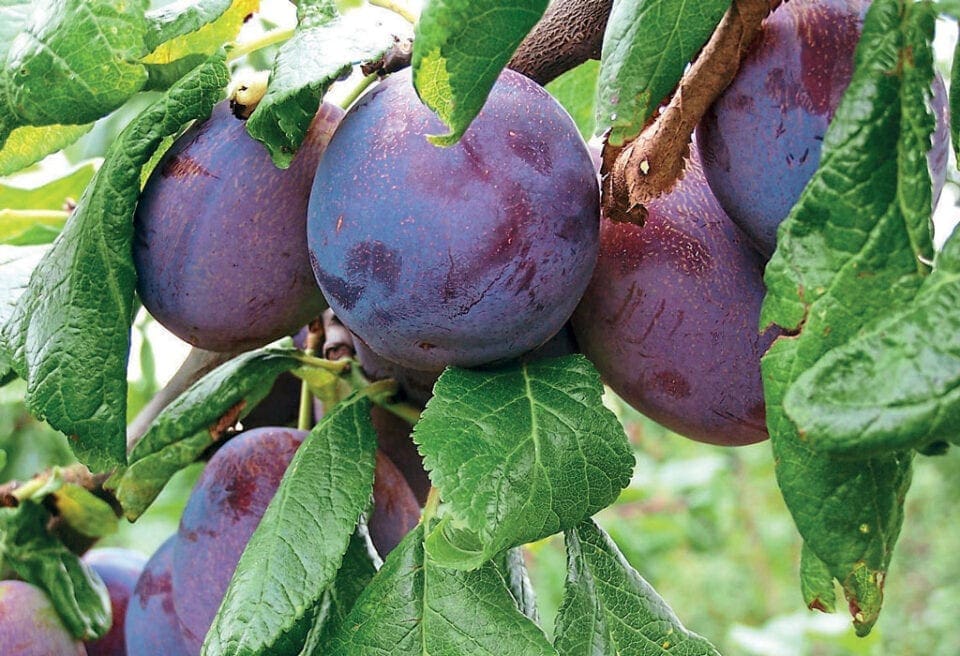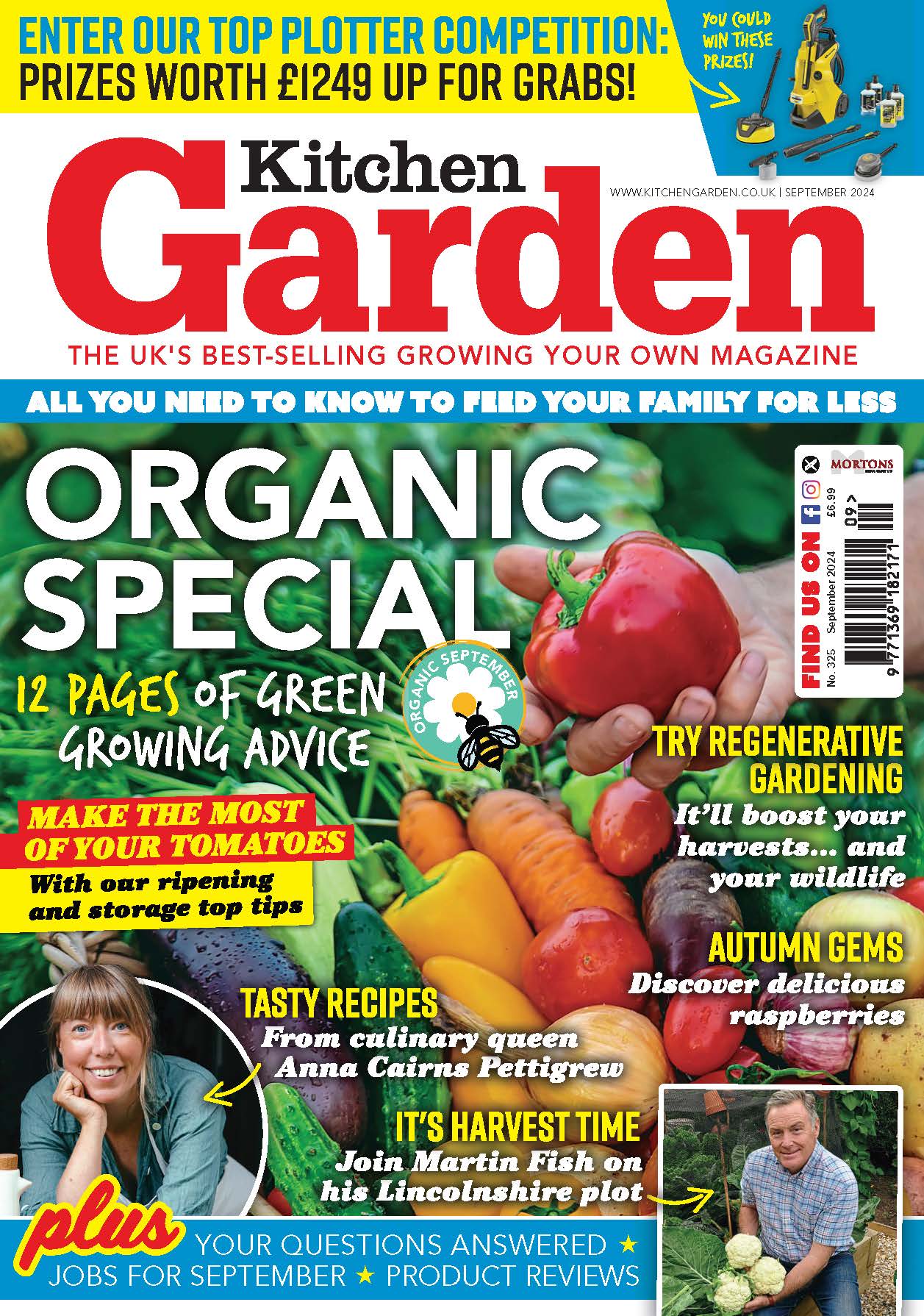
David Patch is talking plums and explains why compromise and patience are both important in choosing which variety to grow.
Gardening can mean many things to different people, from the aesthetic of creating a beautiful herbaceous border to the sheer visceral pleasure of burrowing in the soil to unearth your first new potatoes of the season. For me, gardening has meant embracing two attitudes which don’t come easily: patience and compromise.
Patience as a gardener is relatively straightforward to grasp. Garden centres may be full of pots of instant colour (and these hits of immediate gratification certainly have their place), but the real joy comes from planting a seed with the promise of fruit or flower in several months’ time. Or, in the case of planting a mulberry tree, in about 10 years’ time.
Compromise becomes clear once you have started to develop a relationship with your own garden, and realise that not everything you see on television or in glossy gardening magazines will grow in your particular site.
We are truly spoilt in the number of plants, seeds and bulbs that we can purchase, but more often than not we will have to compromise between what we would like and what we can grow well – and what we can afford!

A big family
The fruit that most brings this spirit of compromise to the fore is the plum family. The Prunus family they belong to is huge, ranging from almonds through plums to evergreen shrubs like the cherry laurel.
The plum group, and its close relatives, form a large continuum, ranging from the small bitter hedgerow sloes all the way through to the succulent sweet gages.
Botanists may divide them up into separate sections, sloes being Prunus spinosa, damsons and bullaces Prunus institia and plums and gages P. domestica, but for all intents and purposes it’s best just to see them as a single sliding scale.
The compromise, and there is one, is that as you venture further towards the sweeter end of the scale, you also start to need warmer, more favourable conditions.
Sloes, damsons and bullaces will grow just about anywhere, tolerating cold, windswept sites with shade. Greengages, at the other extreme, can be shy to crop in anything less than full sun, with protection from spring frosts and that elusive well-drained but moisture-retentive soil gardening writers like me tend to harp on about.

Which variety?
So, if you are looking to plant a new plum tree, which varieties should you be considering?
The most obvious factor is your geographical position. If you have a sunny, sheltered garden in Kent then the world is your oyster – any variety should thrive. If you live 800ft up in the Pennines, you should probably limit yourself to the easier-to-grow plums.
However, there are other things to consider. How important is having regular crops, or are you happy to accept there will be some poor years, but when you do get a crop the flavour will be superb? And are you a ‘leave it to its own devices’ gardener, or are you happy to cosset the tree, possibly fleecing in spring if frosts are forecast? Answering both these questions will mean you can move a few places up or down the list.
When you look at my list of recommended varieties, you’ll notice one gaping omission – the ubiquitous ‘Victoria’. The most popular and well-loved of all English plums needs little introduction from me, and is a good dual purpose variety.
However, it has a lot of drawbacks, being very susceptible to canker and silver leaf disease; it is very vigorous in growth, and tends to have lean years followed by bumper crops which can easily snap branches. It might be heresy to say it, but you can do much better.

Favourites
Here then are my favourite plums, going from those on the edge of the damson family which are the easiest to grow, through to those close to being greengages, and hence more tricky.
‘Merryweather’: This variety is on the very edge of the plum/damson divide, so much so that most nurserymen list it as a damson. It was introduced in 1907, and there was a fashion for damsons at the time, which may have led to the decision to class it as that rather than a plum. There is no doubt, however, that it has many characteristics of a plum – large fruit which are sweet enough to eat off the tree when fully ripe, while still having a rich damson depth of flavour. The trees are heavy to crop, and will grow happily in the coldest, wettest sites.
‘Belle de Louvain’: A very tough and hardy tree, frost resistant blossom and a regular cropper. This is a very good choice for a cold and windy site, and will even tolerate some shade. The large dark red fruit turn to deep purple when fully ripe. They can be a little dry if eaten fresh, but stewed or used for jam they are absolutely delicious.
‘Herman’: Very early to ripen – as soon as mid July in a good summer. This is a true plum, large blue fruit with a very good flavour. A reliable cropper and good for cold sites.
‘Blue Tit’: Another result of crossing a gage and a plum, but this one takes after its plum parent (‘Czar’). It’s very reliable, producing large crops of deep purple blue fruit in mid August. When fully ripe you may be able to detect a hint of gage flavour, but the main advantage is that the blossom has quite good frost resistance for a plum, so definitely worth considering for colder exposed gardens.
‘Edwards’: An under-appreciated variety in my opinion, as this is very heavy to crop in most years, and tolerates a wide range of conditions. In early September the tree is laden with very large plum purple fruit. The flavour is good, and it makes a wonderful jam.
‘Marjorie’s Seedling’: A great choice for extending the plum season, as this crops from the middle of September onwards. Hardy, disease resistant and a reliable cropper, this is an excellent garden variety. Leave the fruit until it turns from purple to almost black-blue for the best flavour.
‘Anna Spath’: Discovered in Hungary in 1870, this is another variety which deserves to be more widely planted. In early September it produces good crops of large purple red fruit, with a delightful sweet and full flavour, and full of juice. Excellent disease resistance.
‘Opal.’: Bred in Sweden in 1925, this excellent variety has ‘Oullins Gage’ as one of its parents, and is definitely on the gage end of the spectrum, with a deep gage sweetness that makes it one of the best flavoured plums. Often described as an “improved ‘Victoria’” the fruit does resemble the venerable English variety – straw yellow flushed with red and purple – but the flavour is noticeably sweeter. While it does have some of the reliability of a plum, it does need a sunny, sheltered site for the sugars to fully form in the fruit.
‘Denniston’s Superb’: Another variety on the edge of being a gage – some nurseries will list it as a gage, others as a plum. Medium sized grass green fruit, very similar to a ‘Reine Claude’ gage, and with a similar honey sweetness, but a little more reliable and easier to grow than a true gage. Even so, does best in a warm sunny site.











